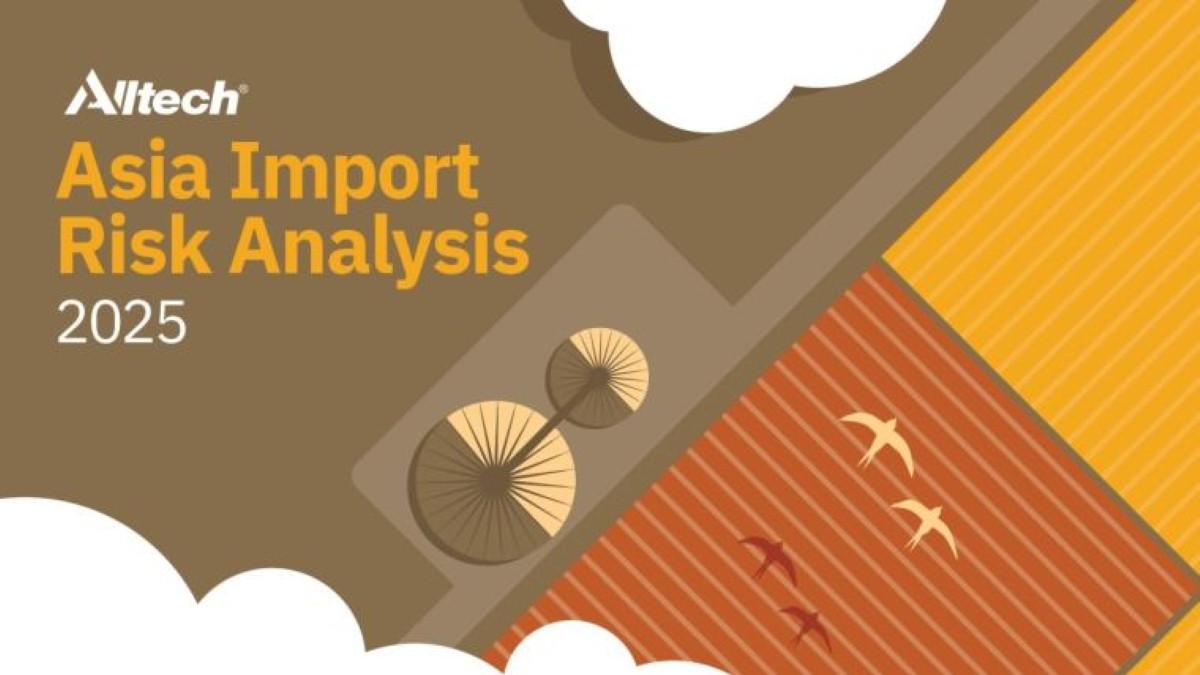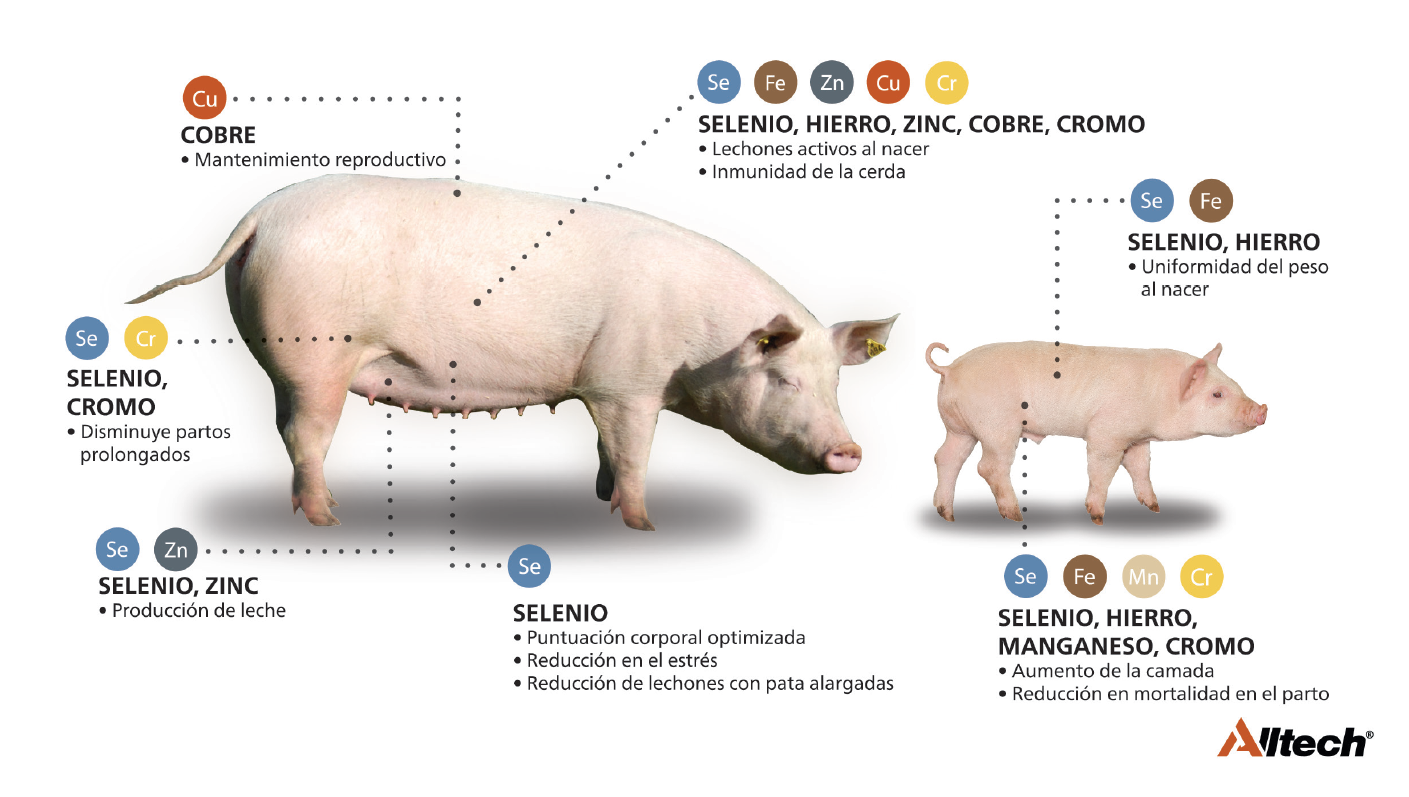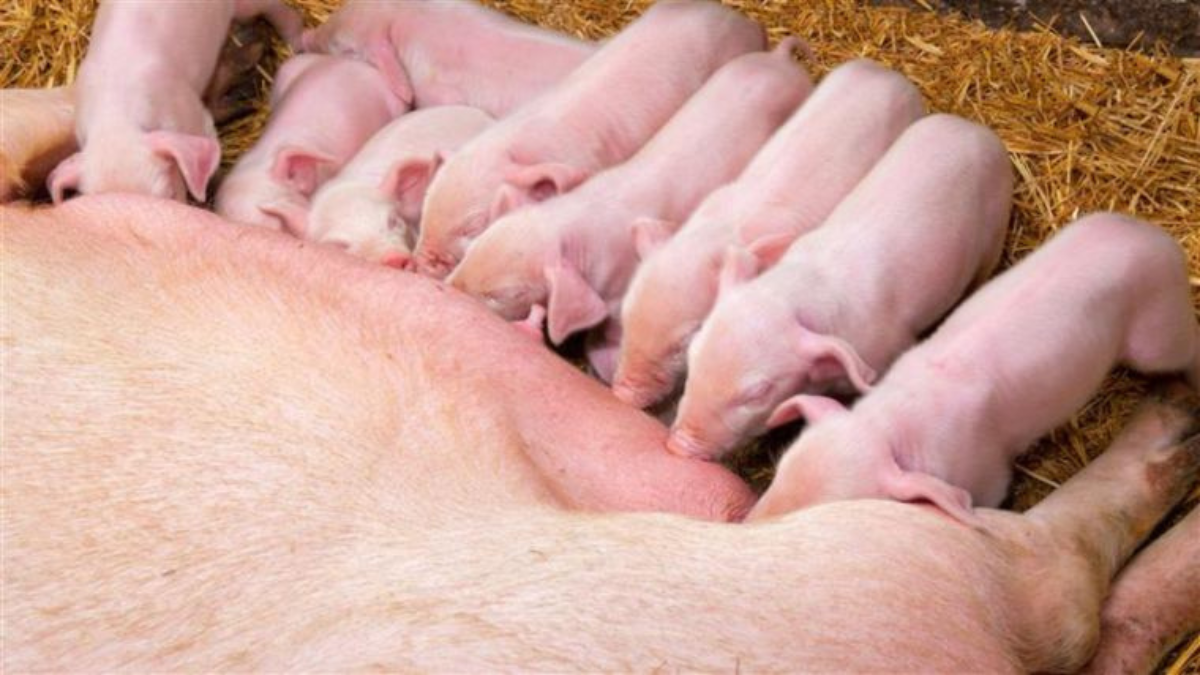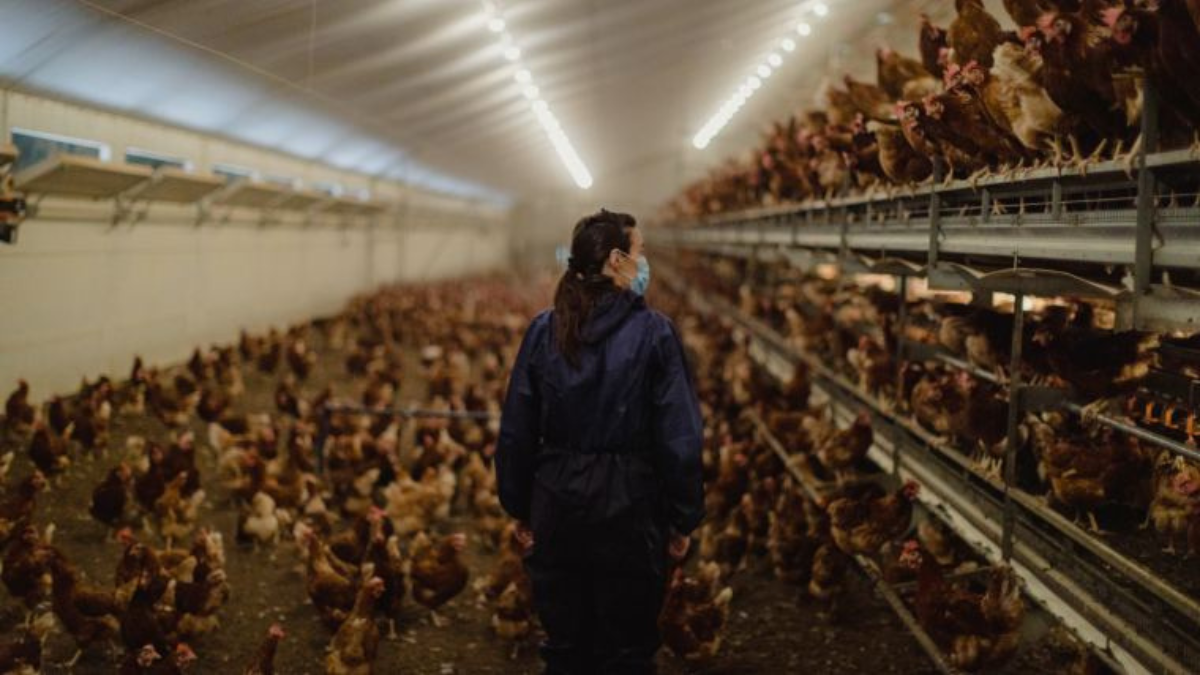Introduction :
The aim of feeding dairy cows is to cover all their nutritional requirements, whether for maintenance, milk production, pregnancy or, in the case of primiparous cows, growth. A balanced and adapted ration not only optimizes production, but also respects the physiological requirements of the species. Thanks to the diversity of the microbial population present in the rumen, dairy cows are able to efficiently valorize fiber-rich feeds, such as forages, which remain indigestible for monogastric animals (Cuvelier et al., 2015).
Forage plays an essential role in the diet of ruminants, representing their main source of energy. However, a significant proportion of the material ingested remains unused, since less than 50% is actually digested and assimilated. This limitation is mainly due to the fiber content of the forage. Structural components of plant tissue, fibers play a supporting and protective role within the plant. Their proportion tends to increase with the maturity of the plant. There are three main categories of fiber: lignin, hemicellulose and cellulose. While these compounds are indigestible to monogastric animals, ruminants have the ability to extract the energy contained in hemicellulose and cellulose through microbial fermentation. On the other hand, lignin remains a totally indigestible fraction (Gamache, F., 2007).
As far as starch is concerned, dairy cows require rations with a content generally between 20 and 30% on a dry matter basis, in order to optimize both milk production and rumen health. This level of incorporation promotes optimum production of propionate, a volatile fatty acid essential for glucose synthesis, which in turn is used to produce lactose, the main milk sugar (Carney and Cardoso, 2020). Starch digestibility varies considerably depending on its source (corn, wheat, barley) and the processing method applied (grinding, steam flaking). Highly digestible starches enable faster energy release, which is particularly important when it comes to meeting the increased energy requirements of lactating cows (Seales Winslow, 2022).
Enzymes are functional proteins with a high molecular mass, generally between 10 and 1000 kDa (Burhan et al., 2002). They play a fundamental role in regulating metabolic processes, facilitating the transformation of nutrients into energy and cellular components, through the degradation or specific modification of these substrates (Bergmeyer et al., 1979; Pelmont, 1995; Drouin, 2005).
The mechanism of action of enzymes in catalyzing biochemical reactions generally follows four basic steps:
- Substrate binding: the enzyme has a specific active site capable of recognizing, attracting and selectively binding substrate molecules.
- Enzyme-substrate complex formation: once the substrate is bound, a temporary complex forms between the enzyme and the substrate, conditioning the latter's transformation.
- Catalysis: the enzyme facilitates the reaction by weakening or breaking certain chemical bonds in the substrate, enabling it to be converted into a product.
- Product release: the products formed are then released, while the enzyme, unchanged, is available to initiate a new reaction.

The aim of this article is to evaluate the effect of incorporating Amaize® and Fibrozyme® into the ration of dairy cows on their growth performance during the pre-weaning period.
What is Fibrozyme®?
Fibrozyme is a specific enzyme produced by fermentation extract of Trichoderma longibrachiatum, capable of degrading cellulose and hemicellulose, thus accelerating digestion in the rumen by breaking down the parietal fraction of plant fibers.
- It improves the speed of early fiber digestion thanks to better bacterial adhesion.
- It works in synergy with microbial enzymes, boosting their effectiveness.
- It stimulates rumen microbial populations and optimizes fermentation efficiency.

https://creative.alltech.com/l/7f5616fb21de1cfd/
The trial involves 400 primiparous Holstein cows in early lactation, divided into two batches of 200 cows each: a control group and an experimental group.
Allocation was carried out in such a way as to form homogeneous groups, taking into account breed, stage and rank of lactation, as well as a similar level of milk production.
Fibrozyme® was incorporated into the total mixed ration (TMR) at a rate of 1.5 kg per tonne, ensuring a daily intake of 15 g of Fibrozyme® per cow.
|
Group
|
Quantity (Kg/Tonne)
|
Number of cows per group
|
Parity
|
Average lactation month
|
Average milk production
|
|
Fibrozyme ®
|
1,5
|
200
|
Primipare
|
2nd month
|
35,02
|
|
Control
|
0
|
200
|
Primipare
|
2nd month
|
34,62
|
During the experimental period, various parameters were examined and recorded:
- Body condition score of 400 cows, assessed every 15 days.
- Daily milk production for each batch.
- Milk quality analysis, including milk composition parameters, carried out daily.
Statistical data relating to milk production and composition (milk quantity, TB, TP, etc.), live weight trends and body condition score trends were described by means and standard deviation.
The results were then subjected to a one-way analysis of variance (ANOVA 1).
- Evaluation of milk production
Average daily milk production recorded throughout the trial was 35.85 kg for the control lot, compared with 36.82 kg for the experimental lot, representing an average improvement of 3.16%, with peak increases of up to 10.54%.
Although no significant effect was observed between the fourth and eighth weeks of the trial (P > 0.05), significant differences were noted in favor of the supplemented cows from the first week onwardsthe first week (34.25 kg vs. 37.86 kg), the second week (34.90 kg vs. 36.70 kg), the ninth week (36.06 kg vs. 37.11 kg) and the tenth week (35.08 kg vs. 36.66 kg).

Overall, supplementing the diet with Fibrozyme® had a significant effect on the cows' milk production throughout the trial period (P < 0.001). This improvement can be attributed to better forage digestibility, promoting more efficient use of nutrients, as well as increased feed intake.
- Milk quality assessment
- Evaluation of the butyrous rate
Dietary supplementation with Fibrozyme® had no significant effect (P > 0.05) on milk fat content throughout the trial period, with the exception of the fourth week. During this period, a significant reduction in fat content was observed in the experimental batch, reaching 29.97 g/kg (P < 0.001). This drop can be attributed to a dilution effect linked to a significant increase in milk production, which reached 38.02 kg of milk per cow per day.

-
- Protein assessment
Dietary supplementation with Fibrozyme® had a significant effect on milk protein content (TP) throughout the trial period (P < 0.001). Statistically significant differences were observed in week two (30.92 vs 31.93 g/kg), week three (31.10 vs 31.82 g/kg), week five (31.50 vs 32.32 g/kg), week eight (31.02 vs 31.70 g/kg) and week nine (30.93 vs 31.68 g/kg).th week (31.50 vs. 32.32 g/kg), eighth week (31.02 vs. 31.70 g/kg) and ninth week (30.93 vs. 31.68 g/kg), in favor of supplemented cows (P < 0.05).
In contrast, no significant differences were observed in the first, fourth, sixth and seventh weeks (P > 0.05).
- Body condition score evaluation
The average body condition scores (BCS) of cows in the experimental and control groups were analyzed and compared on the basis of six successive evaluations.
The results reveal significant differences between the two groups on several of these measures. In fact, during evaluations 1, 2, 4 and 6, cows in the experimental group showed higher average NECs than those in the tegroup (3.21 vs. 3.13; P < 0.05), suggesting a more moderate mobilization of body reserves in the supplemented cows.
In contrast, no significant difference was observed in the fifth evaluation, with both groups showing an identical mean NEC of 3.16.
These results indicate that Fibrozyme® supplementation may help to preserve the body condition of cows, although this effect seems to depend on the time of assessment.

Amaize is a specific enzyme produced by extracting the fermentation of Aspergillus oryzae, rich in alpha-amylase enzymes.
Alpha-amylase plays an essential role in carbohydrate digestion, breaking down starch into simple sugars and facilitating their assimilation by the body.
Amaize promotes the release of maltodextrins, intermediate products of starch degradation. These maltodextrins differ from other degradation products in the way they are assimilated, making them a highly available energy source for rumen bacteria.
This increased availability alters the profile of volatile fatty acids (VFAs) in the rumen, increasing butyrate production relative to propionate. This change in microbial profile promotes lactate utilization, stimulates metabolism and contributes to optimizing milk production and maintaining the cow's overall performance.

https://creative.alltech.com/l/5a5449107ccc8450/
The trial was carried out on 70 multiparous Holstein cows in mid-lactation, divided into two batches of 35 cows each: an experimental batch and a control batch.
The animals were divided into homogeneous groups, taking into account breed, stage of lactation, lactation rank and similar milk production levels.
Amaize® was incorporated into the total mixed ration (TMR) at a rate of 1.5 kg per tonne, providing 15 g of Amaize® per cow per day.
|
Group
|
Quantity (Kg/Tonne)
|
Number of cows per group
|
Parity
|
Average milk production
|
|
Amaize ®
|
1,5
|
35
|
Multipare
|
34,5
|
|
Control
|
0
|
35
|
Multipare
|
35
|
During the experimental period, several parameters were monitored and recorded, including :
- Body condition score (BCS) of 70 cows;
- Daily milk production for each batch ;
- Daily analysis of milk quality, including composition parameters.
An analysis of variance with repeated measures over time was performed using the PROC MIXED procedure in SAS software (version 9.0). The parameters studied were milk production and body condition of the cows, fat and protein content.
- Evaluation of milk production
Average monthly milk production was 39.11 kg for cows fed the Amaize®-supplemented ration, compared with 36.20 kg for those in the control batch. Statistical analysis using repeated measures ANOVA revealed a significant effect of Amaize® supplementation on milk production (P = 0.0490).
The graph below illustrates the evolution of milk production over the course of the experimental period, showing a systematically higher daily production in cows supplemented with Amaizeproduction in cows supplemented with Amaize®, compared with cows in the control group, throughout the trial.

- Milk quality assessment
- Evaluation of the butyrous rate
The significant increase in fat content observed in cows in the experimental group (P = 0.002) suggests that the incorporation of Amaize®may improve nutrient digestibility and lipid utilization, leading to a higher fat content in milk.
The average difference of 0.06% between the experimental and control groups proved statistically significant, confirming the measurable and beneficial effect of Amaize® on milk composition, particularly fat content.

-
- Evaluation of the butyrous rate
The average milk protein content measured during the trial was 3.19% for cows fed the Amaize®-supplemented ration, compared with 3.11% for those in the control batch. Analysis of variance showed a significant effect of enzyme supplementation on milk protein content (P = 0.0184).

This significant increase (P = 0.018) observed in cows from the Amaize® supplemented batch, suggests that the use of amylolytic enzymes may enhance milk protein synthesis, by improving the availability of amino acids released during starch degradation.protein synthesis, by improving the availability of amino acids released during starch degradation.
- Body condition score evaluation
Average cow body condition scores were 2.74 for the control batch and 2.73 for the Amaize® supplemented batch. Analysis of variance revealed no significant effect of diet type on body condition score (P = 0.717).

The evolution of the body condition score over the experimental period shows a faster and more pronounced recovery in cows fed an Amaize® supplemented ration, compared to the control group.Amaize® supplemented ration, compared with the control lot, whose recovery was slower and less pronounced as the lactation progressed.
Conclusion:
The aim of both studies was to assess the effect of two types of enzymes - Fibrozyme®, a fibrolytic enzyme, and Amaize®, an amylolytic enzyme - on the production performance of dairy cows.
- Fibrozyme® (fibrolytic enzyme) :
The addition of fibrolytic enzymes, designed to improve fiber degradation, increased forage intake and, consequently, significantly improved milk production compared with unsupplemented cows. However, a negative effect was noted on milk fat content, while protein levels were improved. Supplementation also limited postpartum weight loss and slightly improved the body condition of the cows, without any significant effect.
- Amaize® (Amylolytic enzymes) :
The incorporation of amylolytic enzymes, targeting starch, has demonstrated positive effects not only on milk production, but also on the nutritional composition of the milk, notably increased fat and protein levels. The results suggest that efficacy could be optimized by adjustments to the enzyme dose and by monitoring over a longer period, in order to better assess lasting effects on animal production and health.
Chamel El Bakali
Animal Nutrition Technical Sales Representative
Alltech Morocco


























